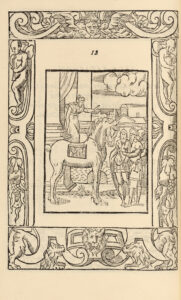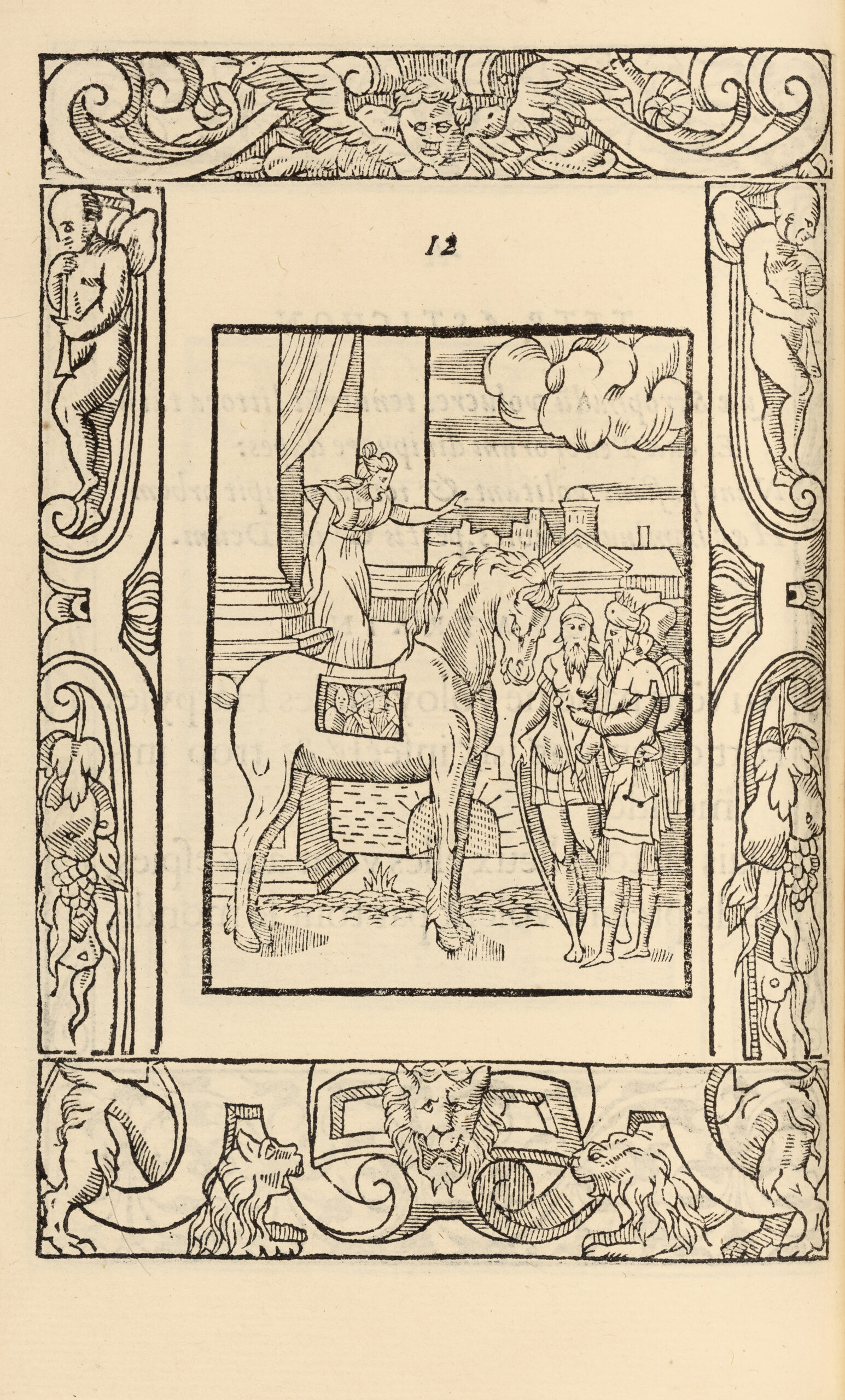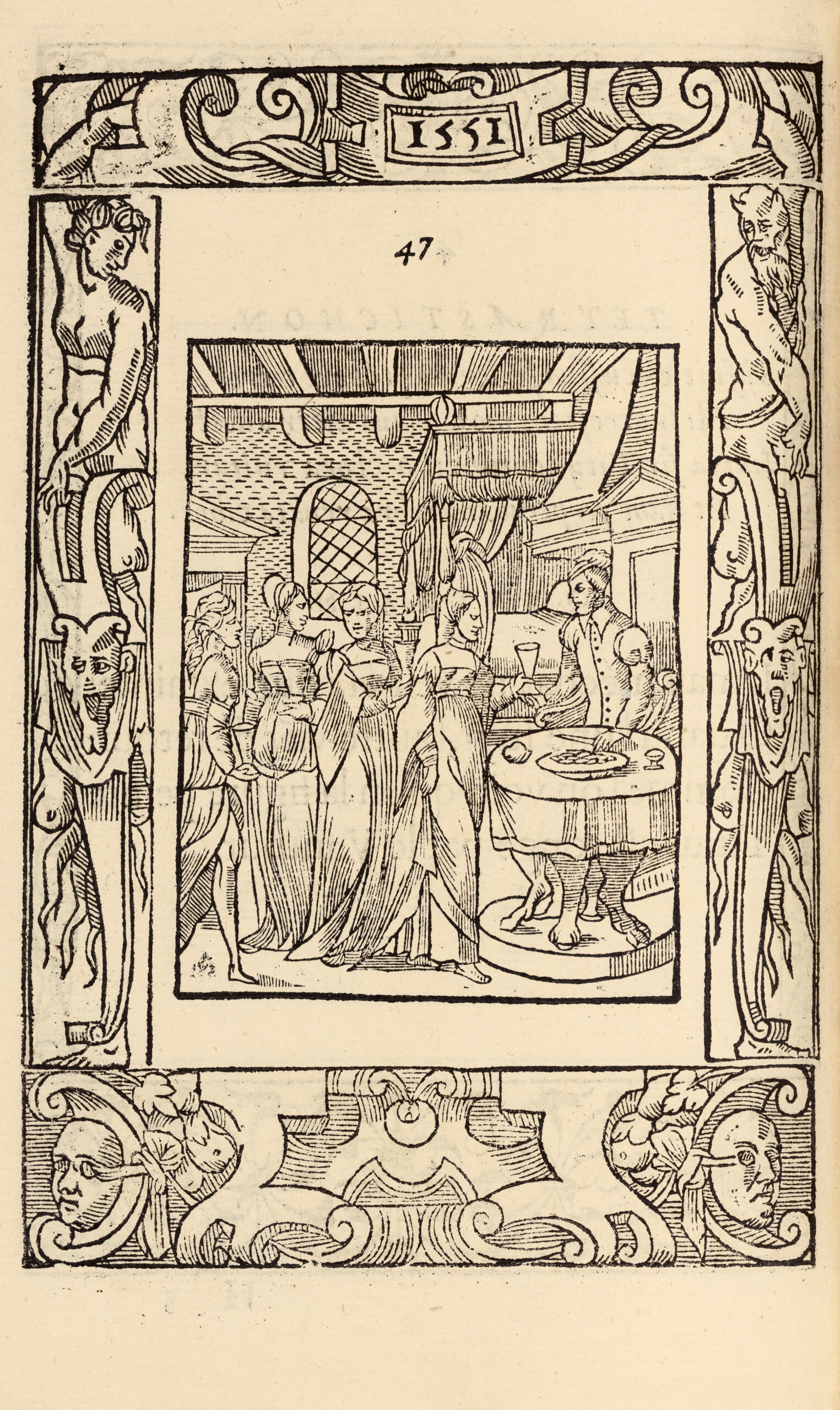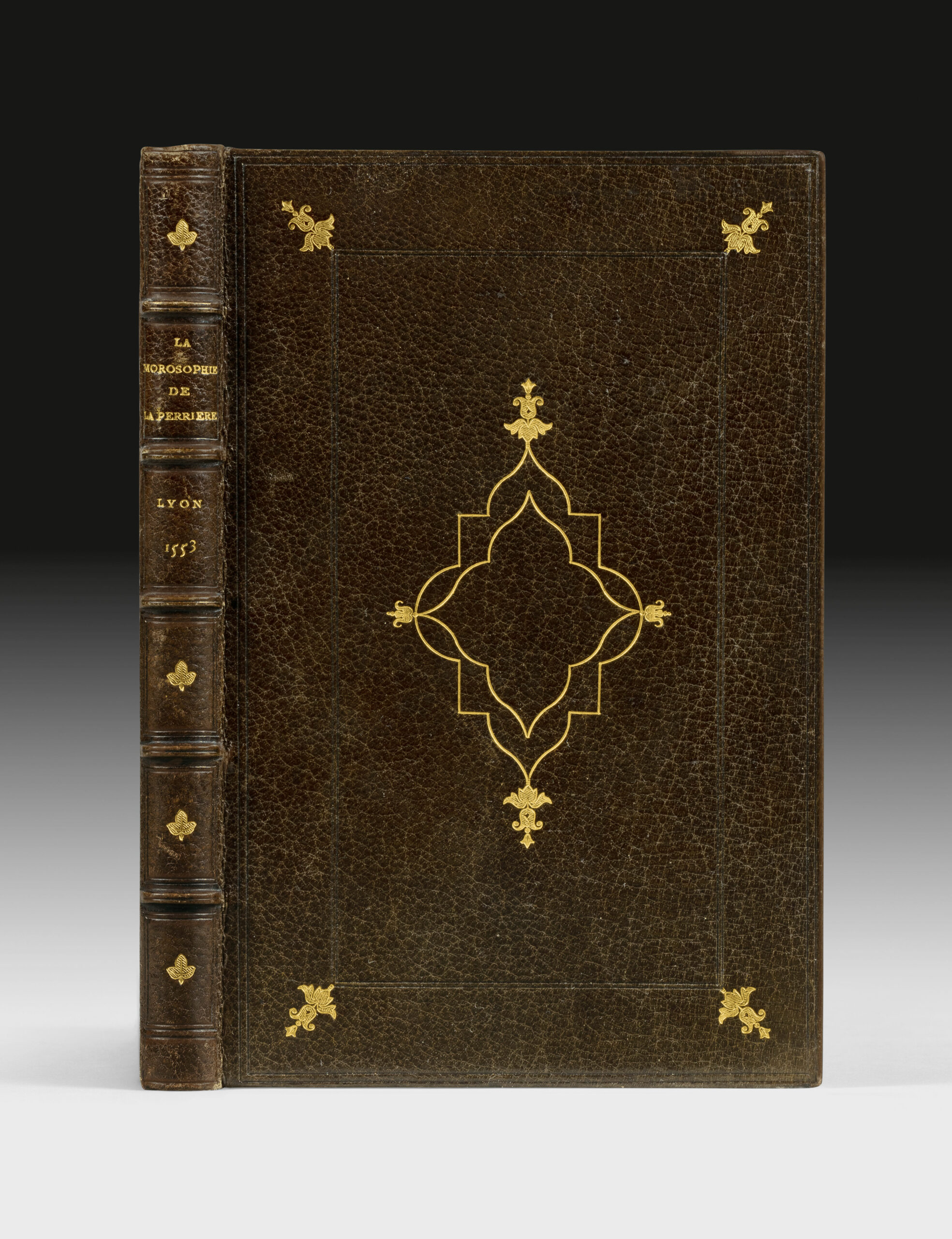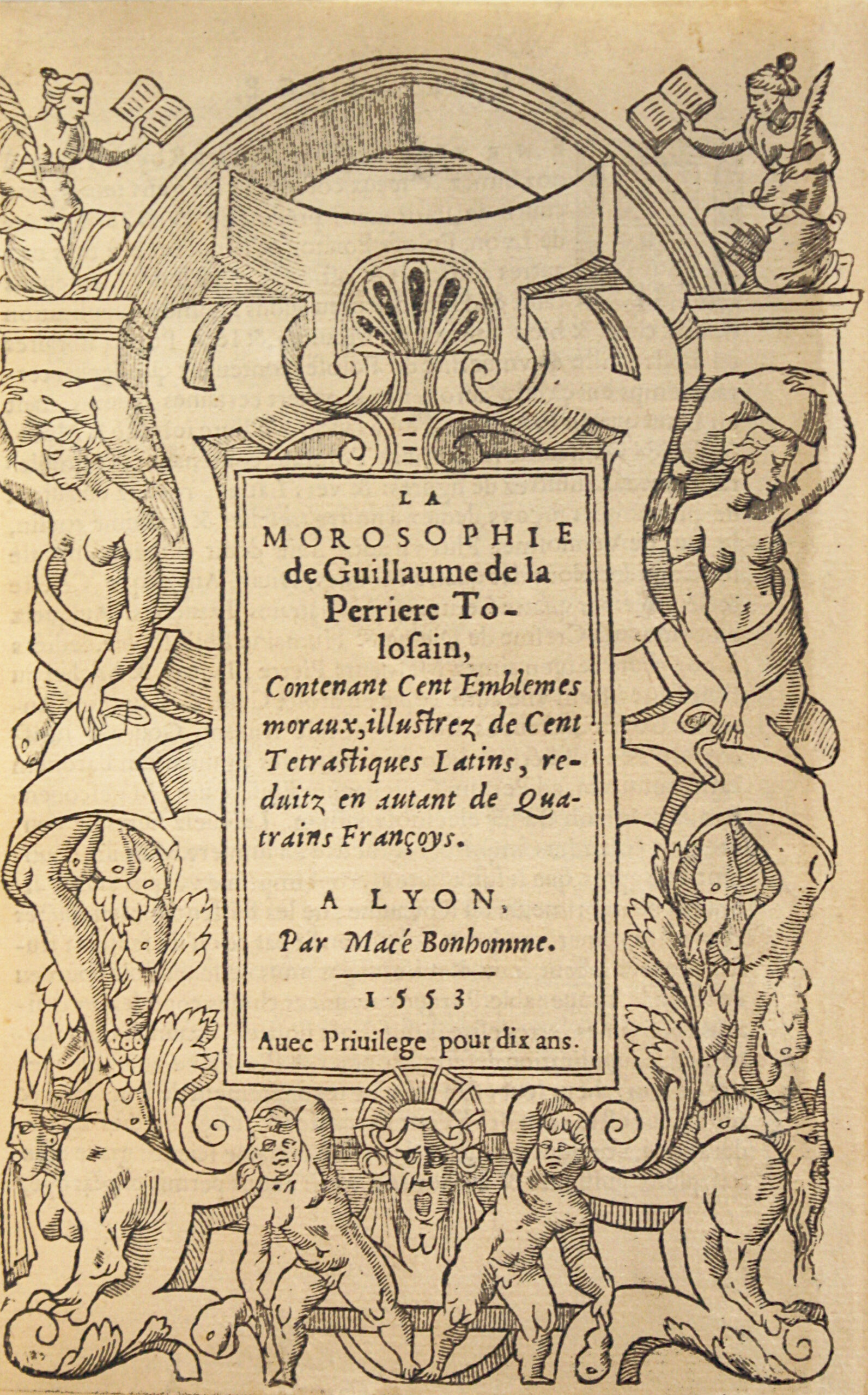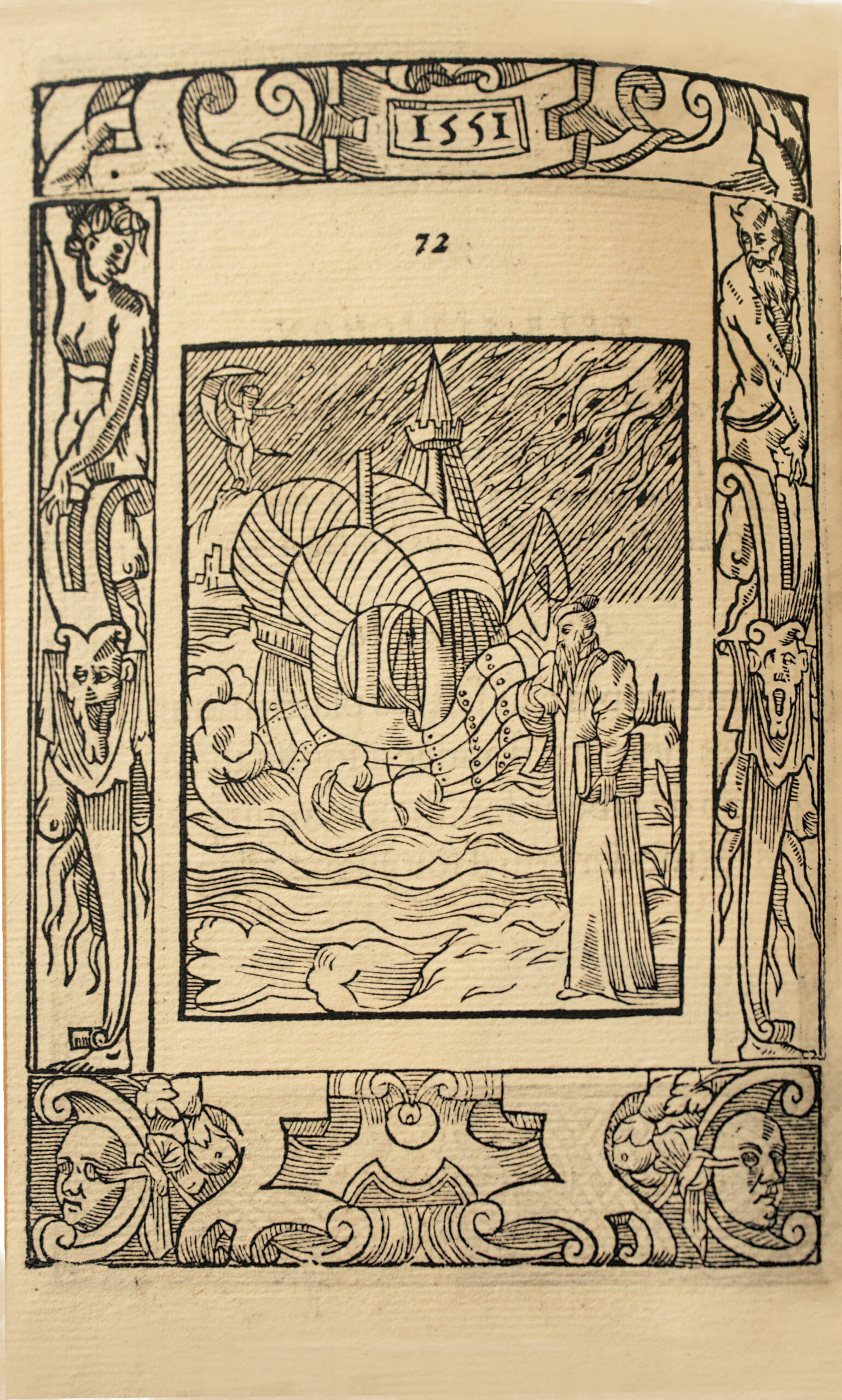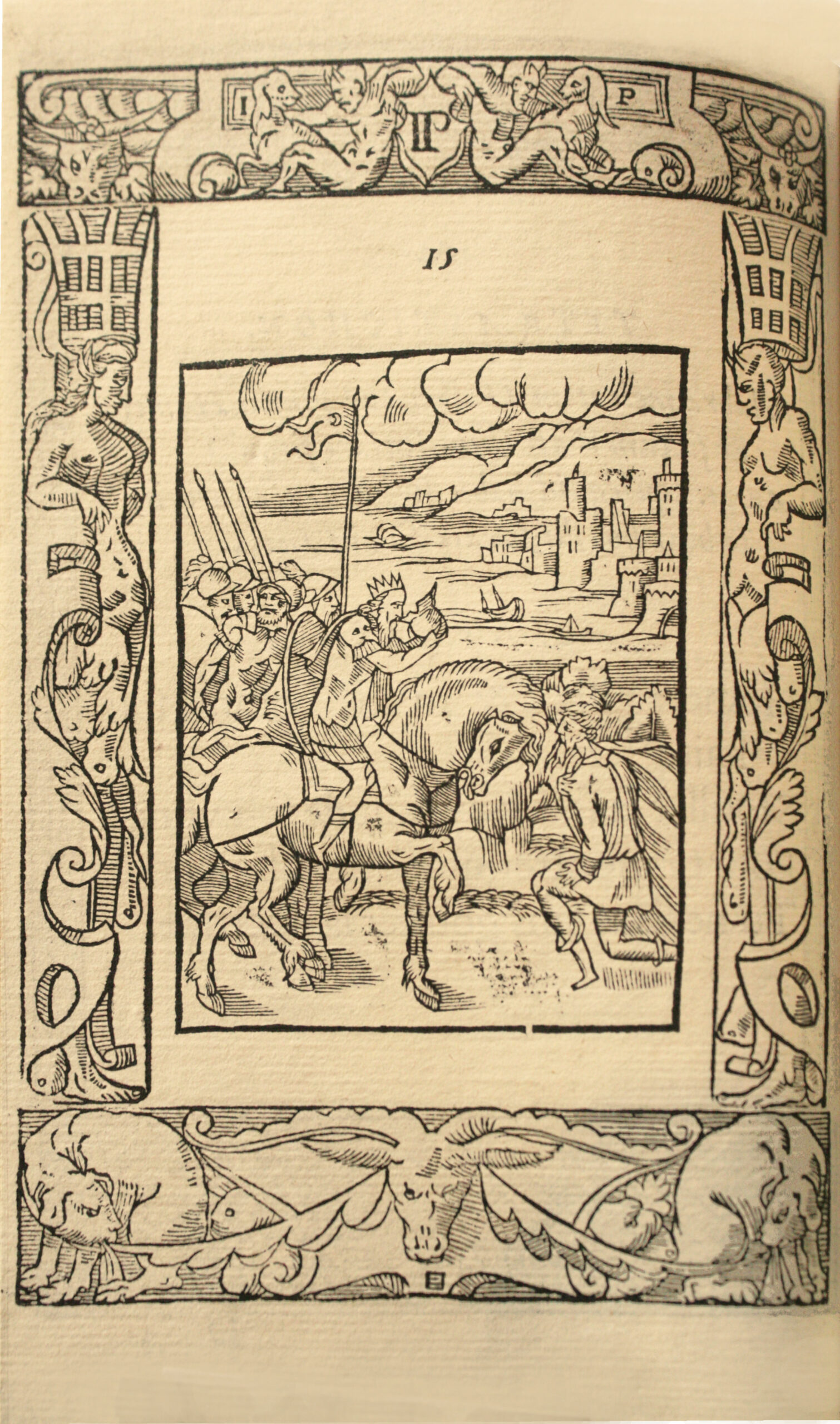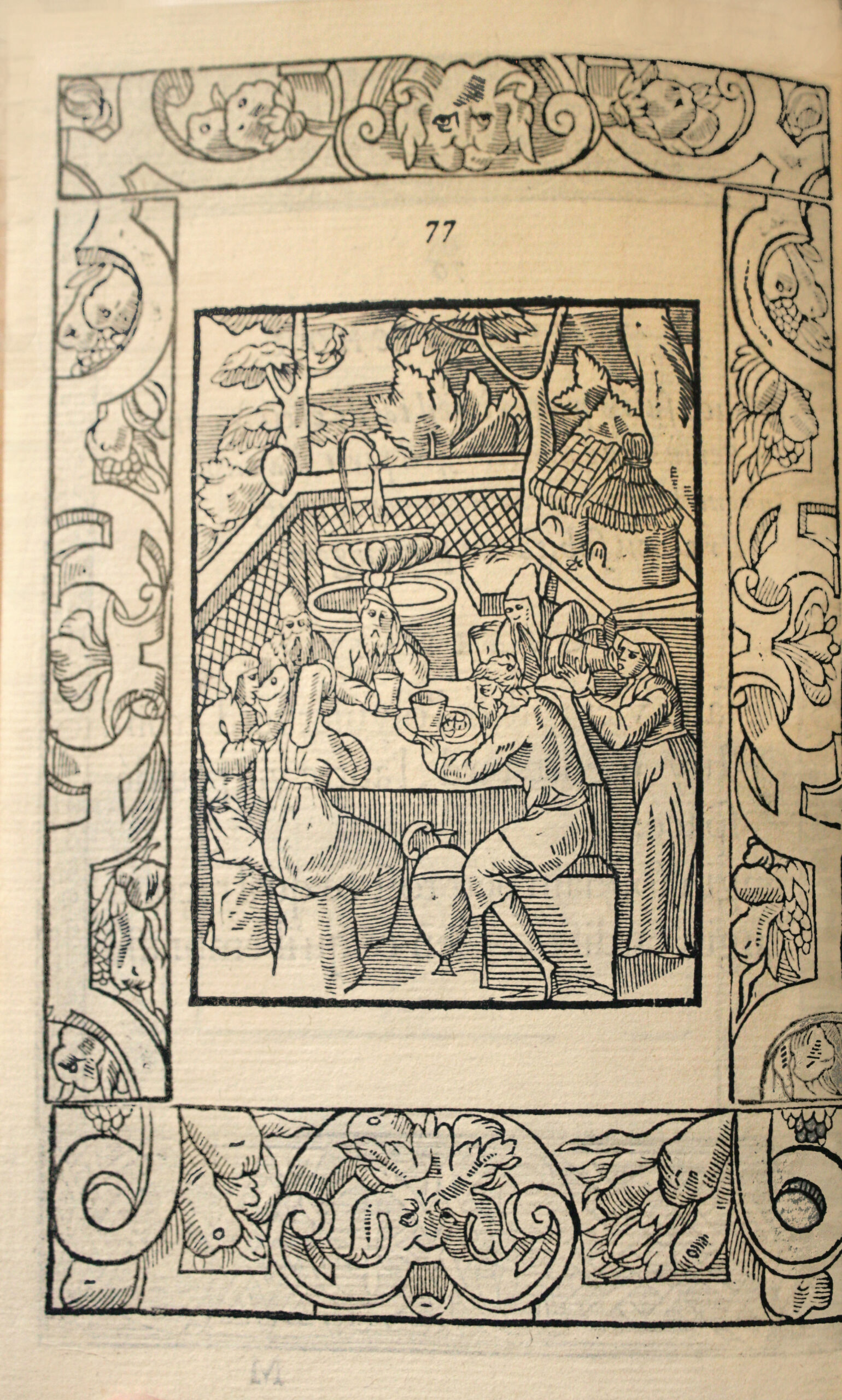Lyon, Macé Bonhomme, 1553.
8vo [157 x 100 mm] of (13) ll. and 100 numbered ll., title slightly shorter at the bottom, vignettes 90 and 91 partially colored in blue.
Brown morocco, double frame of blind-stamped fillets with gilt fleurons in the corners and decoration at the centre, spine ribbed and decorated with gilt fleurons, inner gilt fillet border, gilt edges. Binding signed by Capé.
First edition and first issue of this very beautiful illustrated collection of emblems.
Adams L-172 ; Brunet, III, 830 ; Rothschild, V, 3328 ; Brun, 232 ; Vinet 841 ; Landwehr, Romanic, 454.
Dedicated to Antoine de Bourbon, Duke of Vendomois to whom 2 epistles are addressed, this book of ‘crazy wisdom’ is preceded by a couplet and a quatrain by Bernardo Poggio, a sonnet by Guillaume de Caynet and a decima by Jacques de Maulevant.
It was the second illustrated work of its kind composed by this poet and historian from Toulouse, after ‘Le Théâtre des bons engins’ published in 1539.
The present collection is composed of 100 moralities in Latin and French in the form of quatrains:
« L’arbre sauvage infertil par nature
Ne faut du tout couper ou desplanter
Mais le convient par art d’agriculture
De quelque plant, qui soit fertil, enter » (28).
« Le cheval prent bride, mordz & chevestre
Pour se venger plus aisément du cerf
Puis se reprend (disant) qu’il fait bon estre
En liberté, au pris que d’estre cerf ».
Following a full-page portrait of the author, dated 1552, the illustration consists of a suite of 101 vignettes (71×52 mm or 73×56 mm).The first is a representation of Time, each of the other 100 is an illustration of one of the emblems.In addition to a few references to Antiquity, such as the Trojan horse, all of the figures mainly give us scenes of everyday life in the 16th century: hunting, fishing, preparing flax, plowing, cultivating in a garden, feast, doctors at the bedside of a sick person, harvest of fruits, sculptor, carpenter, dance to the sound of the flute, defense against the boar, nave in the storm…
All the pages are framed with pretty, varied borders of foliage, fauna, characters, animals, porticoes, masks and fruits.Some are signed IM or IP and a few dated 1551. It seems that the sober and lightly shadowed line of the figures is due to Jean Mounier and Jean Perrin and engraved by Guiraud Adret.The title page, in the form of a cartouche, is adorned with caryatids, cupids and grotesque figures.
Precious copy finely bound by Capé towards 1855.
